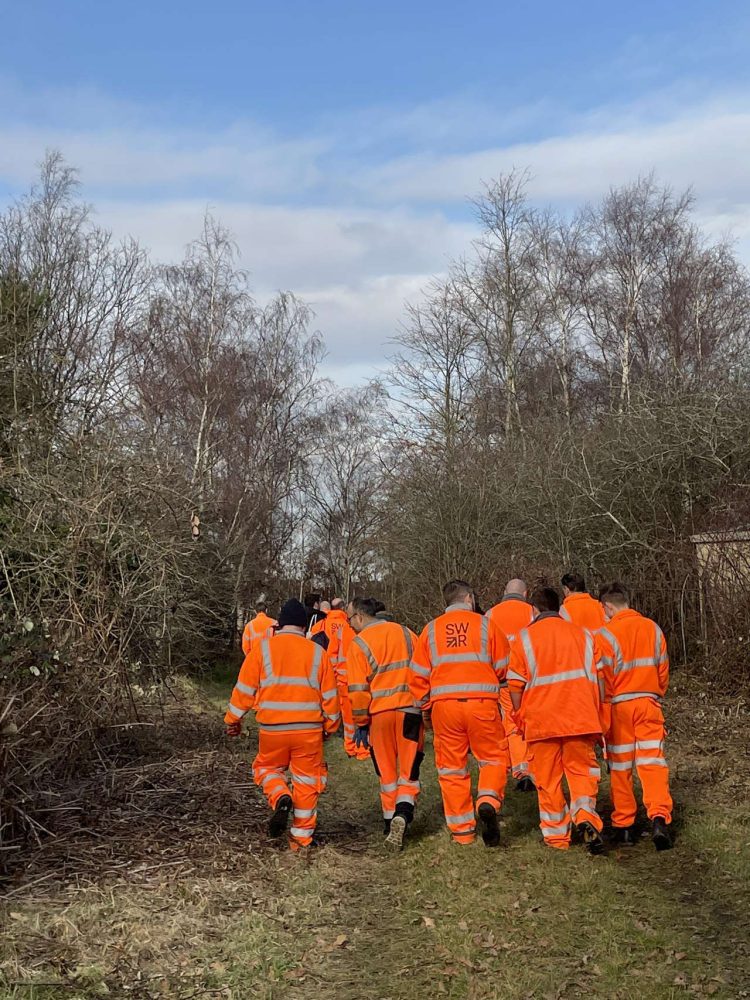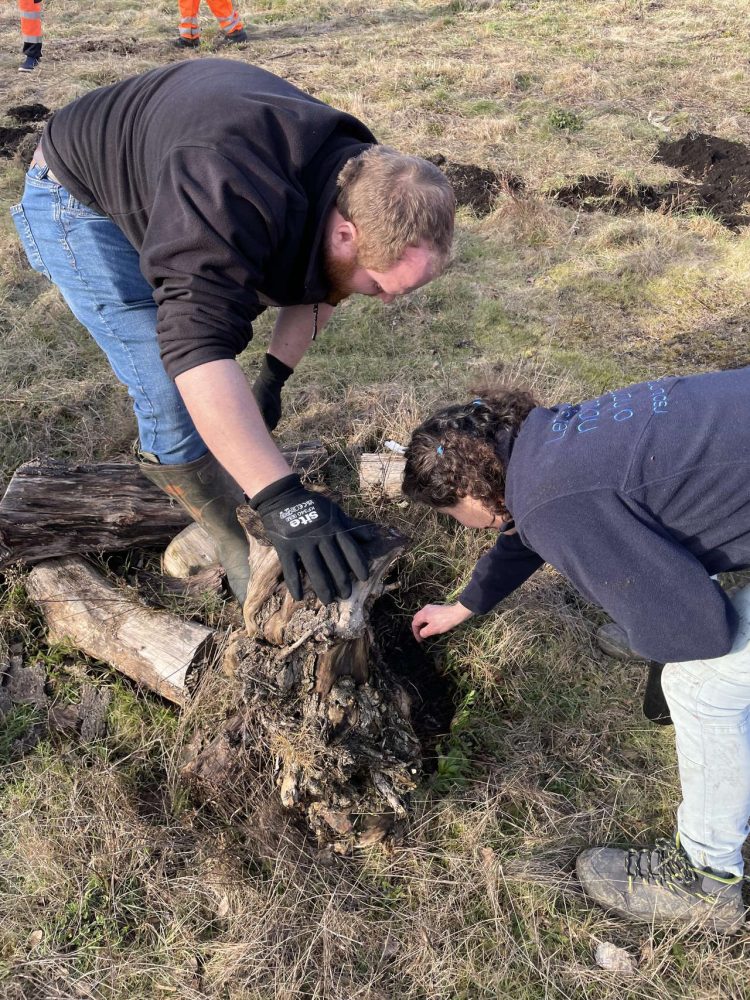A former marshalling yard in Feltham, London, has been rejuvenated by biodiversity improvement works carried out in a joint project between owner South Western Railway (SWR) and Tilhill, a company that provides nature-based solutions.
As part of the development of a new train depot, SWR engaged Tilhill to assist with its plan to improve a disused thirty-acre plot surrounding the site, which provides a home to rare acid grassland and other wildlife. The plan was to enhance the site’s biodiversity and enable future community enjoyment.
The Feltham Marshalling Yards were built during the latter part of the First World War in 1916-18. The yards closed in 1969 due to the volume of freight transport moving from rail to road. The biodiversity project started in 2020, aiming to enhance and protect trackside wildlife while contributing towards biodiversity net-positive goals by 2030.

Tilhill’s Forest Managers carried out site improvement works including planting mixed species trees, creating and managing habitats, introducing bird and bat boxes, mowing regimes and removal of shrubby species to encourage the rare acid grassland and provide homes for wildlife.
A case study spanning the timeline of the works and drawing on ecology reports of the site revealed results including an increase in bat species, with the Leisler bat recorded for the first time, rising numbers of breeding birds, including five new breeding pairs of wrens and an increase in invertebrates, whilst maintaining populations of reptiles on site.
SWR plan to open the site to the public in 2024, creating access for events, education, leisure, health and wellbeing for the local community.

Amy Dickinson, Head of Sustainability at South Western Railway said: “It’s been great to see the site flourish under Tilhill’s care. We have been able to record over 470 species of invertebrates, six species of bats and seen bird species increase to 25 over the past two years.
“At South Western Railway, biodiversity is a key priority for us, and one of the main ways we seek to tackle climate change and protect nature. We also recognise just how important this site is in an urban area, and the benefits it can bring to local wildlife and the communities that surround it. We look forward to opening the site up for use so it can provide even more benefit for our communities in the future. You can find out more about our journey to biodiversity net positive by 2030, along with our other commitments to a better future on our website.”
Tom Bailey, Southern England Forest Manager at Tilhill said: “This is a great site and we are thrilled to see biodiversity improvements so early in the project. It has been a pleasure engaging with the SWR team.
“Management of the site to maintain and improve biodiversity will continue. The aim is to include more habitat piles, carry out further tree planting works and maintenance including thinning and bramble removal to increase diversity and reinvigorate the rare acid grassland community and improve habitats of fauna and flora for a range of wildlife.”






Responses
Excellent project that is 100% positive. Keep the scum get-rich-quick developers well away. They will be sniffing round desperate to get their greedy hands on it.
I totally agree with you John on that one.